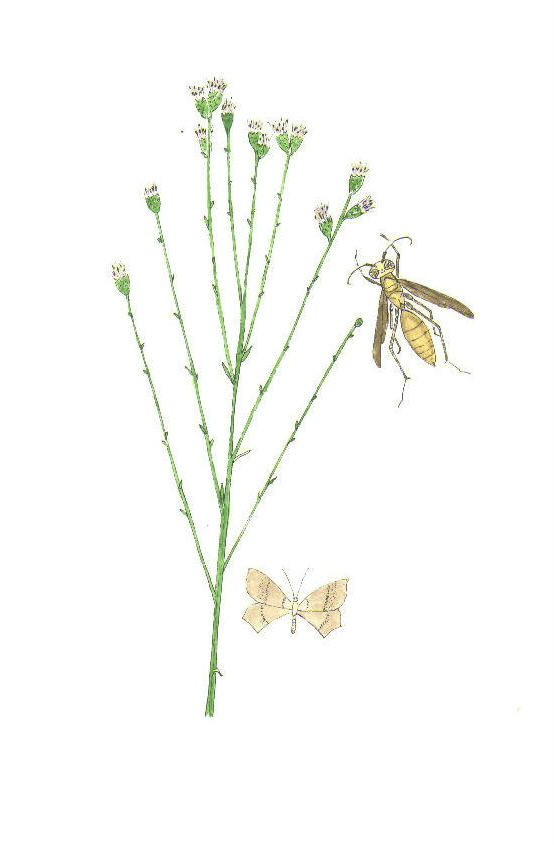Desert Broom
Baccharis sarothroides

Watercolor from live specimen found near Castle Hot Springs, Yavapai Co., Arizona, USA, on 12 Oct. 1992. The moth was reared from the larva on baccharis leaves. The large wasp at upper right is a Paper Wasp (Polistes sp.). They are attracted by flower nectar and also an abundance of insect prey. The moth at lower center, Baccharis Inchworm Moth -- Elpiste metanemaria, feeds in its larval form on the foliage.
SHRUB: Large shrub, often 2 meters
or taller. As a volunteer in urban landscaping, Desert Broom frequently becomes
an unintended, yet attractive, component.
LEAVES: Narrowly elliptic leaves are readily shed with drought or frost
leaving bright green, broom-like stems to conduct photosynthesis.
FLOWERS: Large, dense, panicles of small flower heads without rays. Disc
flowers are greenish white. Male and female flowers are on separate plants.
They are very similar to those described for the Seep Baccharis.
ACHENE: The dense panicles of female flowering heads develop conspicuous
fluff-topped achenes that enhance the plant's broom-like appearance. These
fluffy heads occur on the female plants only.
RANGE: Found throughout the Sonoran Desert, but most abundantly in the
disturbed and better watered ground of roadsides, fallow fields and desert
washes.
Desert Broom's flowering period in mid October offers an abundance of nectar and pollen: Read More.